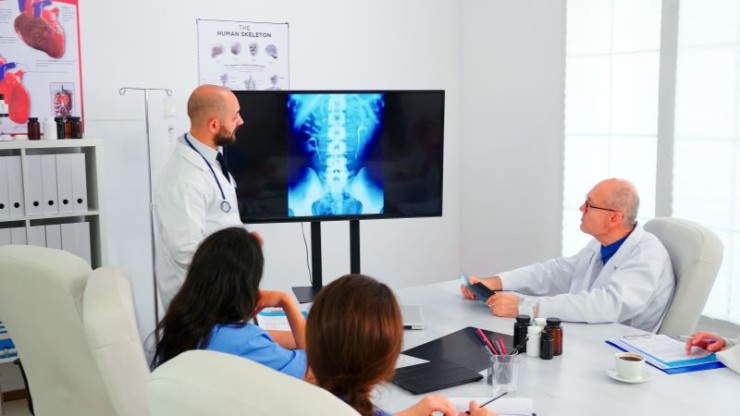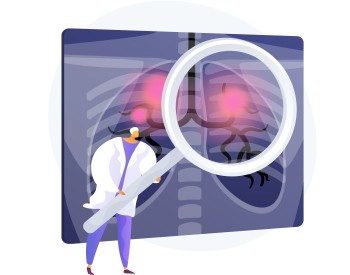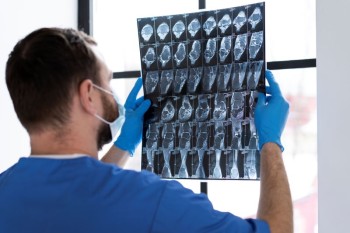
To comprehend the depth of CT Abdomen and Pelvis Plain imaging, it's essential to grasp the fundamentals of computed tomography.
CT Scan Abdomen and Pelvis Plain in India with Cost
Unveiling the Precision: CT Abdomen & Pelvis Plain Scan
Introduction
In the realm of diagnostic imaging, the CT Abdomen and Pelvis Plain scan stands as a crucial tool for healthcare professionals, offering detailed insights into the abdominal and pelvic regions. This article is dedicated to unraveling the intricacies of this imaging procedure, exploring its significance, the scanning process, applications, and the pivotal role it plays in modern healthcare.
Understanding CT Abdomen and Pelvis Plain Imaging
To comprehend the depth of CT Abdomen and Pelvis Plain imaging, it's essential to grasp the fundamentals of computed tomography. This non-invasive imaging technique utilizes X-rays to create detailed cross-sectional images of the abdomen and pelvis. The "plain" designation indicates that the scan is performed without contrast agents.
The Procedure Unveiled
Imagine a journey through the body's core—this is the essence of a CT Abdomen and Pelvis Plain scan. Patients lie on a specialized table that moves through a ring-shaped machine. X-ray beams are directed through the body, and detectors capture the transmitted radiation, producing detailed images. The absence of contrast agents simplifies the procedure, making it suitable for a wide range of diagnostic scenarios.
Addressing concerns about radiation exposure is crucial. While CT scans involve X-rays, modern machines are equipped with dose-reduction technologies to ensure that radiation exposure is minimized without compromising image quality. Ensuring this equilibrium is crucial to safeguarding the well-being of the patient.
Applications in Diagnostic Medicine
The diagnostic capabilities of CT Abdomen and Pelvis Plain scans are extensive. From identifying abdominal organ abnormalities, evaluating the digestive system, detecting tumors or masses, to assessing traumatic injuries, this imaging modality aids in formulating accurate diagnoses and guiding appropriate treatment plans.
Advantages Over Contrast-Enhanced Scans
While contrast-enhanced CT scans have their merits, CT Abdomen and Pelvis Plain scans offer distinct advantages. By omitting contrast agents, this type of scan is particularly valuable for patients with contraindications to contrast media or those requiring repetitive imaging, allowing healthcare providers to obtain crucial diagnostic information safely.
Ensuring Patient Comfort and Safety
Patient comfort is a priority during any medical procedure. For CT Abdomen and Pelvis Plain scans, the process is typically quick and straightforward. Radiologic technologists ensure that patients are positioned comfortably, and clear communication helps alleviate any apprehensions. Safety measures, including minimizing radiation exposure, are implemented to prioritize patient well-being.
Special Considerations for Specific Cases
While CT Abdomen and Pelvis Plain scans are versatile, certain cases may require additional considerations. Pregnant individuals, for instance, may necessitate alternative imaging methods to minimize radiation exposure to the developing fetus. Individualized approaches ensure the appropriateness of the procedure for each patient.
Interpreting CT Scan Results
Interpreting the results of a CT Abdomen and Pelvis Plain scan requires specialized expertise. Radiologists analyze the images to identify abnormalities, assess organ structures, and provide detailed reports to referring physicians. Collaboration between radiologists and healthcare providers ensures comprehensive and accurate interpretation.
Real-Life Cases and Success Stories
The real impact of CT Abdomen and Pelvis Plain scans is often witnessed in success stories where timely and accurate diagnoses lead to effective treatment outcomes. These stories underscore the importance of this imaging modality in the realm of diagnostic medicine.
The Future of CT Abdomen and Pelvis Plain Scans
As technology continues to advance, the future of CT Abdomen and Pelvis Plain scans holds promise for further refinements. Ongoing research aims to enhance image quality, reduce scan times, and explore novel applications. The evolving landscape of diagnostic imaging ensures that CT Abdomen and Pelvis Plain scans remain at the forefront of healthcare innovation.
Patient Education and Awareness
Educating patients about CT Abdomen and Pelvis Plain scans is vital for fostering informed decision-making. Increased awareness of the procedure, its applications, and safety measures enhances the patient experience and encourages active participation in their healthcare journey.
Costs and Insurance Coverage
Understanding the financial aspects of undergoing a CT Abdomen and Pelvis Plain scan is essential. While this imaging modality is generally covered by insurance, patients should be aware of potential out-of-pocket expenses. Open communication with healthcare providers assists in navigating financial considerations seamlessly.
Common Misconceptions
Clearing common misconceptions about CT Abdomen and Pelvis Plain scans is essential for a better-informed public. Addressing concerns about radiation risks, procedure duration, and the overall safety of the scan contributes to a more accurate understanding.
Conclusion
In conclusion, the CT Abdomen and Pelvis Plain scan emerges as a cornerstone in diagnostic imaging, providing a detailed and comprehensive view of the abdominal and pelvic regions. From its detailed procedure to real-life impact and future advancements, this article aimed to offer a holistic understanding of the significance of CT Abdomen and Pelvis Plain scans in modern healthcare.
FAQs (Frequently Asked Questions)
1. What is the average duration of a CT Abdomen and Pelvis Plain scan?
The duration of a CT Abdomen and Pelvis Plain scan typically ranges from 10 to 30 minutes, depending on the specific areas being imaged and the complexity of the case.
2. Can pregnant individuals undergo a CT Abdomen and Pelvis Plain scan?
While the radiation exposure is minimized, pregnant individuals are generally advised to avoid unnecessary medical imaging. Alternative imaging methods may be considered, and consultation with a healthcare provider is recommended.
3. How frequently are CT scans recommended for monitoring chronic abdominal conditions?
The frequency of CT scans for monitoring chronic abdominal conditions varies based on the specific condition and the individual's medical history. Healthcare providers tailor imaging plans to each patient's unique needs.
4. Are CT Abdomen and Pelvis Plain scans covered by insurance?
Insurance coverage for CT Abdomen and Pelvis Plain scans depends on the specific insurance plan and the medical necessity of the procedure. Patients are encouraged to check with their insurance providers to understand coverage details.
5. Is there any discomfort associated with undergoing a CT Abdomen and Pelvis Plain scan?
The procedure is generally painless. Patients may experience a sense of confinement during the scan, but radiologic technologists are trained to ensure patient comfort throughout the process.
6. Can children undergo CT Abdomen and Pelvis Plain scans, and are there additional considerations for pediatric patients?
Yes, children can undergo CT Abdomen and Pelvis Plain scans when deemed necessary by healthcare professionals. Pediatric imaging involves additional considerations to minimize radiation exposure. Healthcare providers carefully weigh the benefits against potential risks to ensure the child's well-being.
7. What information can CT Abdomen and Pelvis Plain scans provide about gastrointestinal issues?
CT Abdomen and Pelvis Plain scans are valuable for detecting a range of gastrointestinal issues, including inflammation, obstructions, and abnormalities in the bowel. The detailed imaging allows healthcare providers to assess the structure and function of the gastrointestinal tract.
8. Is there an alternative to CT Abdomen and Pelvis Plain scans for individuals with contrast allergies?
For individuals with allergies to contrast agents, alternatives such as MRI or ultrasound may be considered. However, the choice of imaging modality depends on the specific diagnostic requirements and the expertise of the healthcare team.
9. Can CT Abdomen and Pelvis Plain scans detect kidney stones?
Yes, CT Abdomen and Pelvis Plain scans are highly effective in detecting kidney stones. The detailed imaging allows for precise identification of stones in the urinary system, aiding in diagnosis and treatment planning.
10. What should patients expect during and after a CT Abdomen and Pelvis Plain scan?
During the scan, patients lie on a table that moves through the CT machine. It's crucial to remain still to ensure clear images. After the scan, patients can resume normal activities. Radiologists analyze the images, and the results are typically discussed during a follow-up appointment with the referring healthcare provider.
11. Can CT Abdomen and Pelvis Plain scans identify tumors or masses in the abdominal and pelvic regions?
Yes, one of the primary applications of CT Abdomen and Pelvis Plain scans is the identification of tumors or masses in the abdominal and pelvic regions. The detailed imaging provides valuable information for assessing the nature and location of these abnormalities.
(0)
Login to continue



